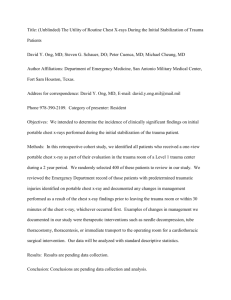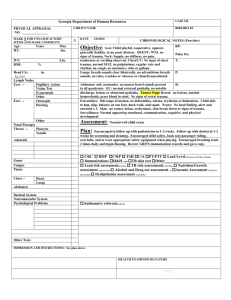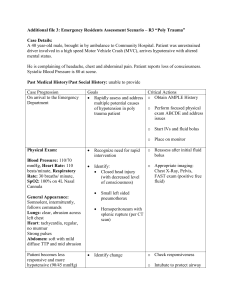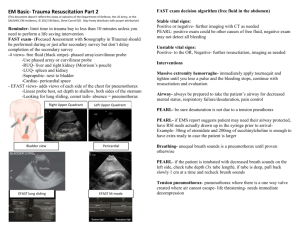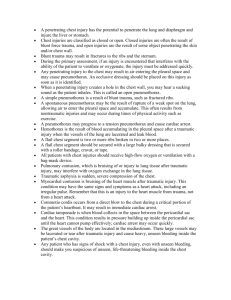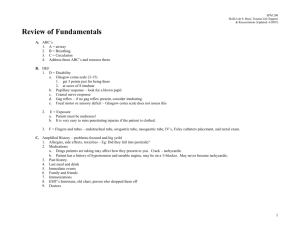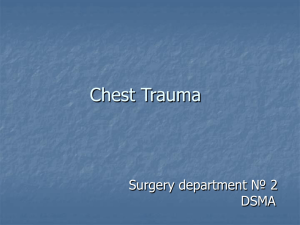Trauma Quiz - British Association of Critical Care Nurses
advertisement
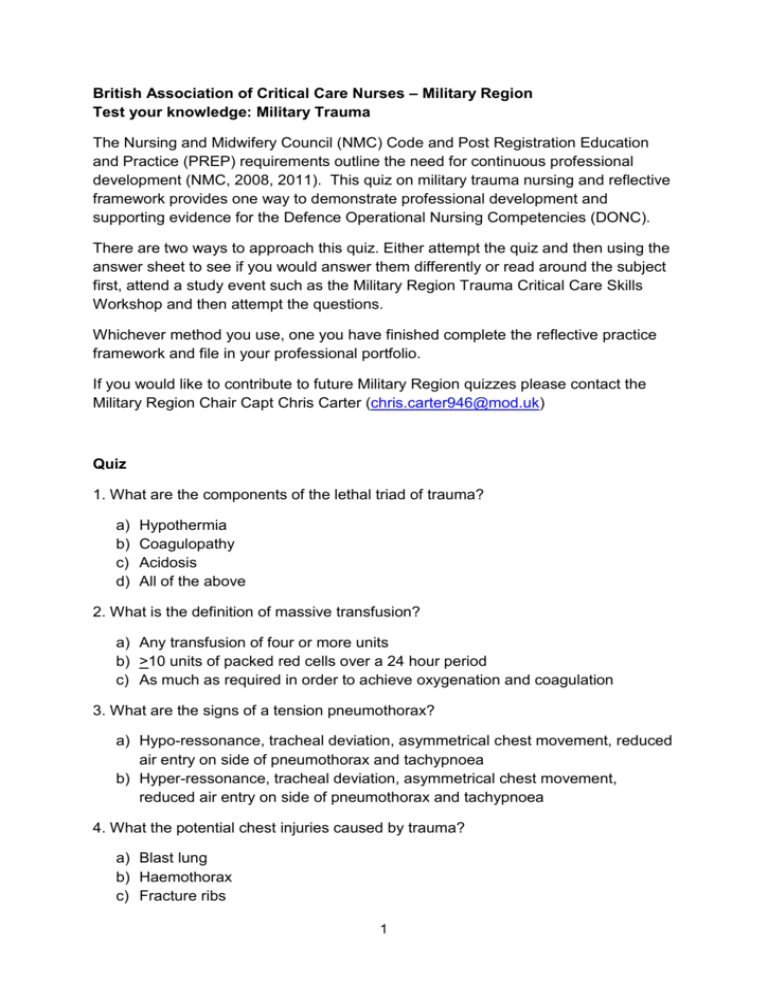
British Association of Critical Care Nurses – Military Region Test your knowledge: Military Trauma The Nursing and Midwifery Council (NMC) Code and Post Registration Education and Practice (PREP) requirements outline the need for continuous professional development (NMC, 2008, 2011). This quiz on military trauma nursing and reflective framework provides one way to demonstrate professional development and supporting evidence for the Defence Operational Nursing Competencies (DONC). There are two ways to approach this quiz. Either attempt the quiz and then using the answer sheet to see if you would answer them differently or read around the subject first, attend a study event such as the Military Region Trauma Critical Care Skills Workshop and then attempt the questions. Whichever method you use, one you have finished complete the reflective practice framework and file in your professional portfolio. If you would like to contribute to future Military Region quizzes please contact the Military Region Chair Capt Chris Carter (chris.carter946@mod.uk) Quiz 1. What are the components of the lethal triad of trauma? a) b) c) d) Hypothermia Coagulopathy Acidosis All of the above 2. What is the definition of massive transfusion? a) Any transfusion of four or more units b) >10 units of packed red cells over a 24 hour period c) As much as required in order to achieve oxygenation and coagulation 3. What are the signs of a tension pneumothorax? a) Hypo-ressonance, tracheal deviation, asymmetrical chest movement, reduced air entry on side of pneumothorax and tachypnoea b) Hyper-ressonance, tracheal deviation, asymmetrical chest movement, reduced air entry on side of pneumothorax and tachypnoea 4. What the potential chest injuries caused by trauma? a) Blast lung b) Haemothorax c) Fracture ribs 1 d) All of the above 5. A casualty has been involved in major trauma, what is the preferred method of opening the airway? a) Head tilt, chin lift b) Jaw thrust 6. What are the potential complications of neck collars? a) b) c) d) e) Unable to open mouth Limited access to perform cricoid pressure Still able to move head once blocked e.g. coughing Pressure ulcers to ears, chin shoulder, All of the above 7. Autonomic dysreflexia is a medical emergency and can occur in spinal cord injured individuals which tends to occur in spinal injuries above? a) T6 b) T10 c) L1 8. What are common signs of autonomic dysreflexia? a) Hypertension, bradycardia, headaches, profuse sweating, flushing. b) Hypotension, tachycardia, cold and clammy. 9. What are potential causes of autonomic dysreflexia? a) b) c) d) Full bladder Kinked urinary catheter Trapped wind All of the above 10. A fractured pelvis can potentially cause which of the following injuries? a) b) c) d) Exsanguination from large pelvic vessels Damage to the bowel Damage to the genitourinary system All of the above 11. Initial treatment should involve applying a pelvic binder or splint. What does alignment allow? a) b) c) d) Reduces pain Restores vascular supply and reduced bleeding Reduces damages to soft tissue injuries Decreases incidence of fat embolism 2 e) All of the above 12. What is the correct dosage of amitriptyline for treatment of ‘phantom limb pain’ following traumatic amputation? a) 25mg once daily b) 50mg once daily c) 75mg three times a day 13. Pregabilin can also be used to treat phantom limb pain following traumatic amputation. What is the correct dose? a) 50mg twice a day b) 75mg twice a day c) 100mg twice a day 14. When IV access has been unsuccessful intraosseous (IO) access is an acceptable method of obtaining vascular access? a) True b) False 15. Which of the following drugs can be administered via an intraosseous (IO) line? a) b) c) d) Co-Amoxiclav Blood, Fresh Frozen Plasma, Platelets Morphine boluses All of the above 17. In relation to fluid resuscitation in trauma, what does the term ‘hypotensive resuscitation’ mean? 18. What is the NICE recommendation for fluid boluses in trauma if no radial pulse can be felt? a) b) c) d) 250ml crystalloid 500ml crystalloid 250ml colloid 1l Hartmann’s stat 19. What does a ‘bubbling’ chest drain indicate? a) Fluid is being removed from the pleural space b) Air is being removed from the pleural space 3 c) Moves when patient breaths in 20. What does a ‘swinging’ chest drain indicate? a) Occurs when patient breaths in and out b) Fluid is being removed from the pleural space c) Air is being removed from the pleural space 21. Which of the following statements are false? a) b) c) d) Chest drains should not be routinely clamped Chest drains should be secured in place using a purse string suture Chest drains should remain below the chest level Chest drains should be secured a transparent dressing 4


